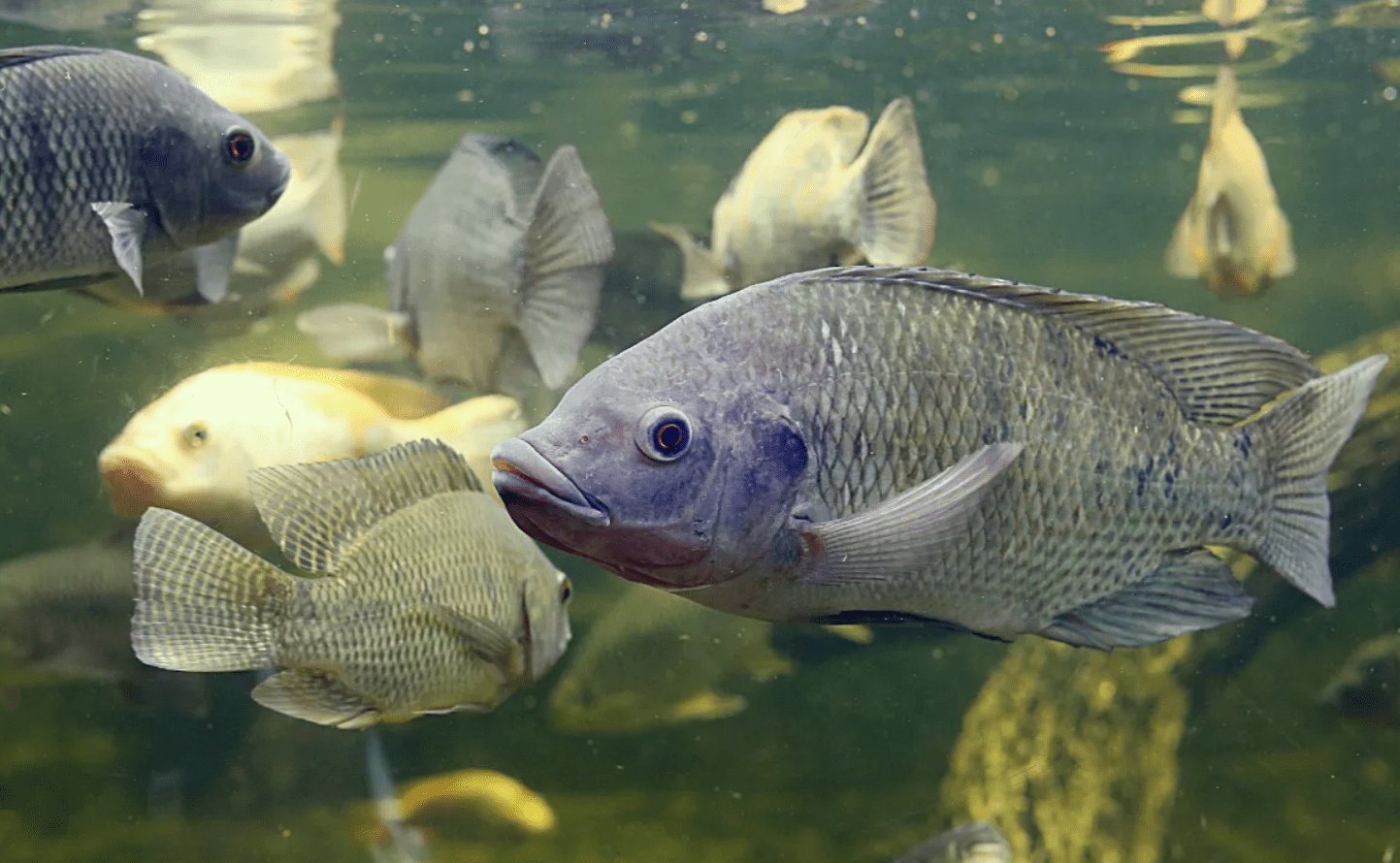Tilapia Fish Bacteria: Bacterial infections can significantly affect fish health, including tilapia, by causing various illnesses. The overall health and quality of tilapia are crucial for successful aquaculture. Thus, maintaining the well-being of tilapia is essential for effective fish farming practices.
Impact of Bacteria on Tilapia Fish
Here are key considerations regarding the impact of bacteria on tilapia fish:
Disease Susceptibility:
- Tilapia can be affected by various pathogens, including Aeromonas, Streptococcus, and Flavobacterium.
- Stress factors such as suboptimal water quality, overcrowding, and inadequate nutrition can weaken tilapia’s immune systems, making them more vulnerable to bacterial infections.
Common Bacterial Infections:
- Aeromonas Infections: Species of Aeromonas can cause diseases like motile aeromonad septicemia (MAS) and furunculosis in tilapia.
- Streptococcal Infections: Streptococcus species can lead to streptococcosis, affecting multiple organs in tilapia.
Signs of Bacterial Infections:
Tilapia with bacterial infections may display various symptoms, including skin sores, fin decay, internal bleeding, bulging eyes (exophthalmia), and swollen abdomens. Their behavior may become erratic, and they often show reduced appetite, significant weight loss, and ultimately, death.
Effects on Growth and Quality:
Infected tilpia often experience stunted growth and inefficient feed utilization. The quality of their fillets deteriorates, leading to undesirable changes in appearance and taste, which ultimately lowers their market value.
Preventive Measures
Ensuring optimal water quality involves regular monitoring and management of water conditions. Providing a well-balanced diet is essential for bolstering the immune systems of tilapia. Additionally, new fish should be quarantined to minimize the risk of introducing infections to existing stock.
How Should Fish Farmers Protect Their Stocks?
Researchers point out that some tilapia farmers rush to use antimicrobials at the first sign of illness, often without waiting for a precise identification of the pathogen. This approach can be problematic because the antimicrobials might not be effective against the specific bacteria, particularly if those bacteria are not typical in aquaculture environments.
This practice raises concerns about the development of antimicrobial-resistant bacteria, which could exacerbate the issue. The researchers advise that fish farmers should rely on diagnostic labs to analyze samples, accurately identify the pathogen, and determine the most effective treatment strategy.
Treatment Options
Antibiotics can treat bacterial infections in tilapia effectively but should be used sparingly to avoid resistance. Furthermore, research is underway to develop vaccines that target specific bacterial strains, offering better protection for tilapia.
Research and Development
Ongoing research is focusing on genetic studies of tilpia and the creation of disease-resistant strains through selective breeding. Additionally, incorporating probiotics—beneficial bacteria that support gut health—could improve tilapia’s disease resistance. Effective management is crucial to counteract bacterial threats and preserve tilapia health and quality. Therefore, maintaining optimal conditions, adopting preventative measures, and staying informed about new advancements are essential for safeguarding tilapia in aquaculture environments.
Tilapia Fish Bacteria Effect on Human Health
San Jose Woman Suffers Limb Loss Due to Tilapia Fish Bacteria Infection
A serious alert has been issued about a dangerous bacteria that may have impacted a local woman, who remains in recovery after nearly two months in the hospital. An online fundraising campaign reveals that she contracted the bacterial infection from eating fish and has since had all four limbs amputated.
The Centers for Disease Control and Prevention (CDC) recently warned about this infection, which can be acquired through consuming raw or undercooked fish or by exposing open wounds to coastal waters. According to a friend, it is likely that the woman from San Jose got this infection from eating undercooked tilapia.
A mother from San Jose faces a life-altering situation. Laura Barajas, 40, has undergone amputations of her limbs due to a severe bacterial infection.
“It’s been incredibly tough on all of us. It’s devastating. This could have happened to any of us,” shared Anna Messina, a friend of Barajas.
According to Messina, in late July, Barajas purchased tilapia from a local store and prepared it for a solo meal. Shortly after, she fell seriously ill and had to be admitted to the hospital.
“She came close to death. She was on a ventilator,” Messina recounted. “They had to put her into a medically induced coma. Her fingers, feet, and lower lip turned black. She developed severe sepsis and her kidneys began to fail.”
A month and a half later, Barajas now faces life without her arms and legs.
Messina attributes the infection to Vibrio vulnificus, a pathogen highlighted in recent CDC warnings.
“This bacterium can be contracted by eating contaminated food or by exposing open wounds or tattoos to contaminated water,” said Dr. Natasha Spottiswoode, an expert in Infectious Diseases at UCSF.
Dr. Spottiswoode emphasized that the bacteria are particularly dangerous for those with compromised immune systems.
The CDC reports 150-200 cases of this infection each year, with a fatality rate of approximately 20%. In severe instances, death can occur within one to two days of infection.
“People need to take practical measures, such as avoiding water immersion if you have a cut until it has fully healed,” advised Dr. Spottiswoode. “For those with weakened immune systems, it’s important to monitor potential risks and steer clear of high-risk activities and foods.”
Messina shared that she and Barajas’ family are still seeking more information about the incident. She hopes that this experience serves as a reminder of life’s fragility.
“Appreciate what we have right now, as it can be taken away in an instant,” Messina added.
